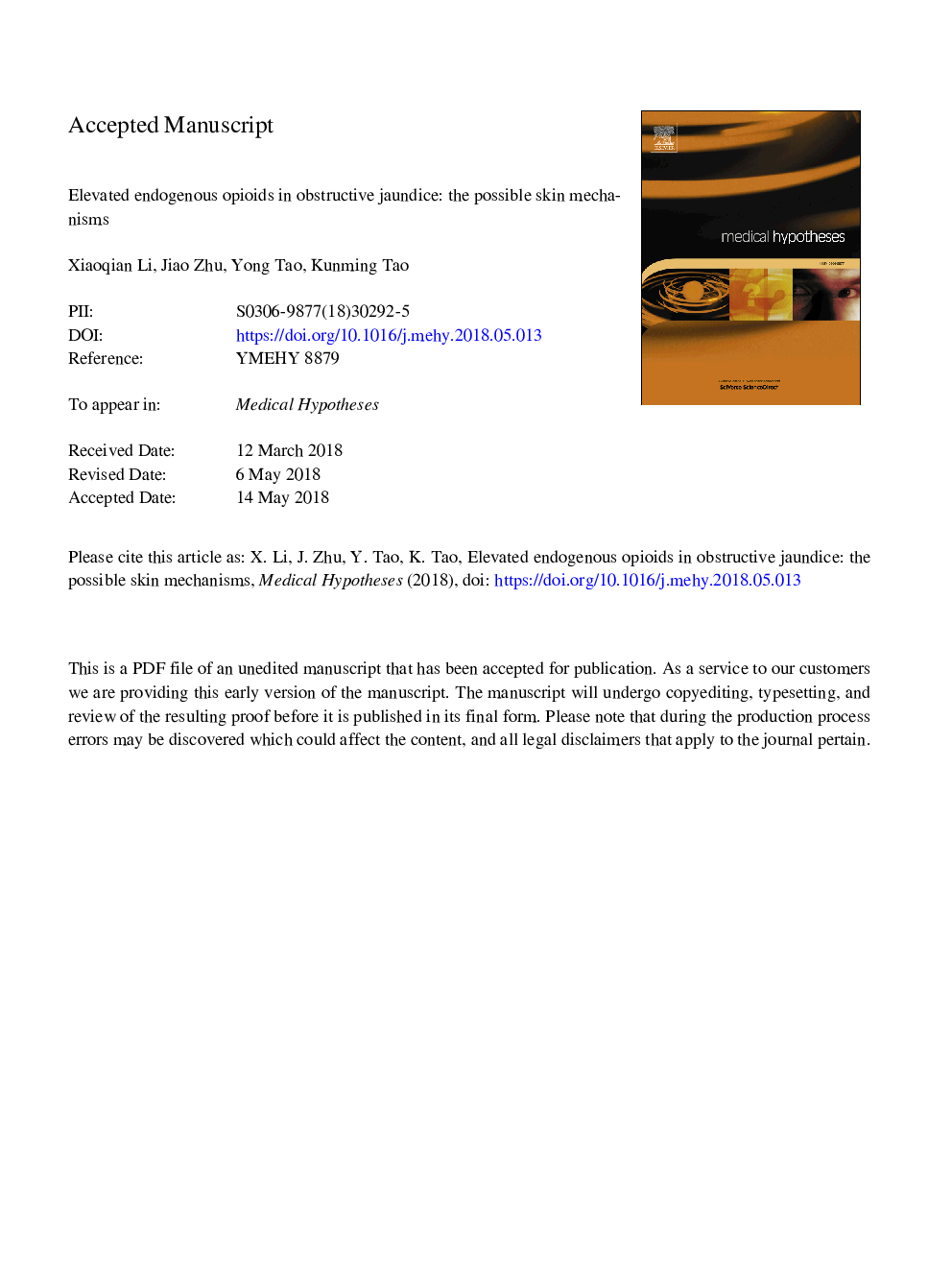| Article ID | Journal | Published Year | Pages | File Type |
|---|---|---|---|---|
| 8515558 | Medical Hypotheses | 2018 | 16 Pages |
Abstract
Obstructive jaundice disease is often accompanied by an increase in plasma endogenous opioids levels. Theses elevated endogenous opioids bring complications like pruritus, cardiac and vascular abnormalities in patients with cholestasis. However, little is known about the mechanism of increased endogenous opioids synthesis in cholestatic liver diseases. Different from the tradition view that the liver is the source of endogenous opioids peptides, recent researches give clues that skin may be another important organ in which endogenous opioid peptides were synthesized during cholestasis. Skin cells like keratinocytes, fibroblasts, macrophages and other inflammation cells had been reported to produce endogenous opioid peptides under certain physical and pathological conditions. In the course of obstructive jaundice, all these cells had the potential to be activated by different molecular mechanisms. And some cells like keratinocyte and inflammation cells had been proved to correlate with elevated plasma levels of enkephalin and beta-endorphin in patients with obstructive jaundice. Hence, we hypothesize that skin may be the site in which abundant endogenous opioid peptides been produced during the course of obstructive jaundice. These skin-cell related mechanisms should be further studied to resolve the puzzle of elevated peripheral opiate tone during obstructive jaundice.
Related Topics
Life Sciences
Biochemistry, Genetics and Molecular Biology
Developmental Biology
Authors
Xiaoqian Li, Jiao Zhu, Yong Tao, Kunming Tao,
